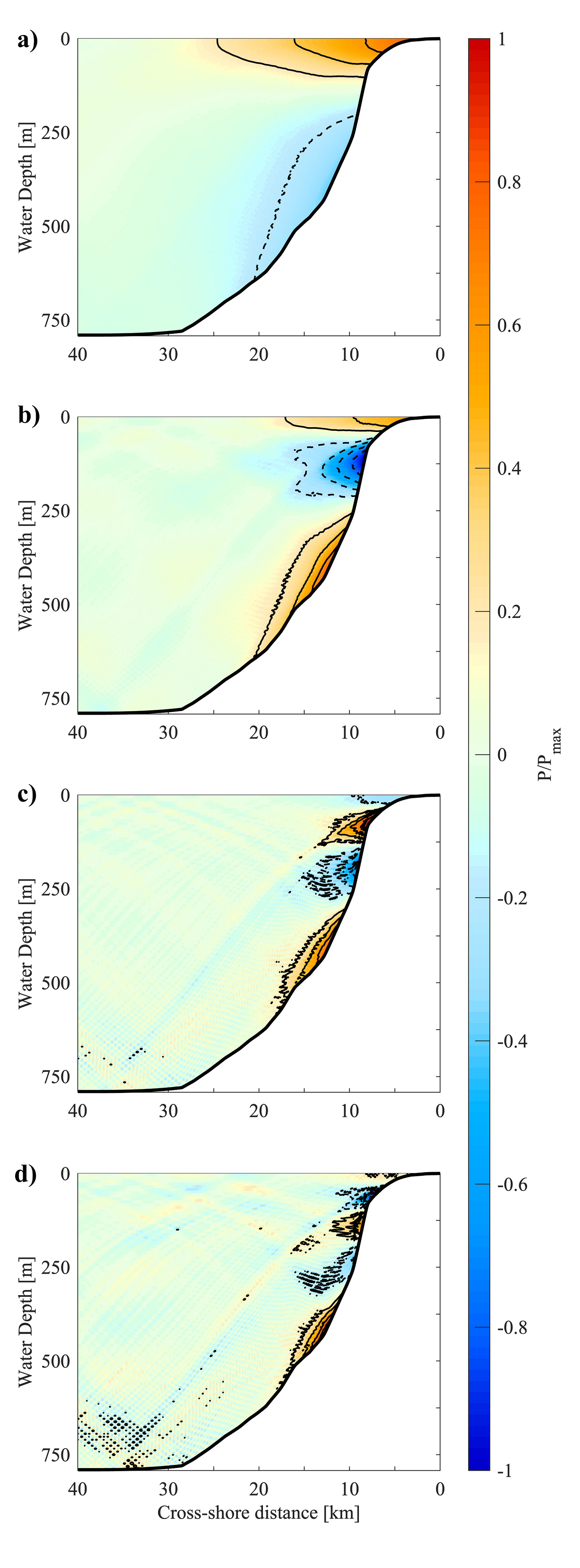Why don't coastal currents follow the tide? Part 3
We've covered the motivation and the field work of this project. Now comes the payoff - what did all those measurements actually tell us about the invisible waves controlling our coastal currents?
The idea was there, but the method didn't come immediately. When we first looked at the seven-year dataset, the patterns seemed contradictory. The twice-daily current rhythms were there, just as previous researchers had found since 1970. But something was fundamentally wrong with the simple tidal explanation. The currents weren't just slightly out of sync with the tides - they were often completely out of phase between sites only 20 kilometers apart. When Point Loma showed strong northward flow, La Jolla might be flowing southward, despite experiencing nearly identical tidal conditions.
Surface tides, with their massive wavelengths stretching hundreds of kilometers, should create nearly uniform current patterns across our small study area. The spatial chaos we observed demanded a different explanation.
The breakthrough came when we separated the tidal currents from what we call the "quasi-barotropic" component - essentially the part of the current that looks like it should be driven by tides but isn't. This component showed much more spatial variability than surface tides. At our three sites spanning just 35 kilometers of coastline, the current patterns were often completely out of phase with each other.

Our analysis revealed wavelengths averaging around 43 kilometers - almost perfectly matching the alongshore wavelengths that Oregon State University professor Jim Lerczak's model runs predicted. These waves propagate northward along the coast at roughly one meter per second, taking 12.42 hours to complete their cycle. Most importantly, they generate currents 3-4 times the magnitude of the surface tides.
The wavelengths and phase speeds of these coastal trapped waves change predictably throughout the year, following seasonal stratification patterns in the water column. During winter months, when the ocean's temperature layers are more uniform near the surface, the waves exhibit longer wavelengths. Summer brings stronger stratification and shorter wavelengths.

This seasonal dependence directly challenges the prevailing view that internal wave behavior is "inherently unpredictable." Our data shows clear, repeatable patterns that follow the physics of how these waves interact with changing ocean conditions. The ocean, in this instance, is more predictable than we thought.
The implications extend far beyond San Diego. The conditions that support coastal trapped waves - steep continental slopes, strong seasonal stratification, and complex underwater topography - characterize coastal regions worldwide. Our findings suggest that similar processes likely influence anomalous coastal currents observed around Oahu and Tasmania, and wherever internal tides interact with sloping bathymetry.

The predictable seasonal patterns we identified also offer hope for improved coastal forecasting. Rather than treating internal wave effects as random noise, we can potentially incorporate their systematic behavior into models that predict coastal transport and water quality.
This research exemplifies how long-term observations can reveal patterns invisible to shorter studies. Without this unprecedented temporal coverage, the coastal trapped wave signals would have remained hidden beneath the more obvious tidal variations. Amazingly, that 1970 paper by Walter Munk predicted that a year or longer deployment would be needed to determine the cause of the currents - a testament to this oceanographic legend's understanding of the ocean.
And this research represents just the beginning. We're currently developing a high-resolution model of the inner shelf with hopes of better understanding these waves. My suspicion is that these waves also generate cross-shore currents that exchange deep ocean and coastal waters, potentially providing the missing piece to another notoriously difficult forecasting puzzle: predicting water temperature. Just like the question of "at high tide, which way does the current flow?", answering "what will the water temp be tomorrow?" remains surprisingly challenging. These coastal trapped waves might hold the key to both mysteries.
Further Reading:

